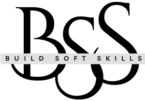
Change management is a critical process for organizations striving to adapt to new technologies, market conditions, or internal shifts. One widely recognized framework for facilitating successful change is the ADKAR change management model. This model, developed by Prosci, provides a structured approach that guides individuals and organizations through the complex process of change. In this article, we will explore the ADKAR change management process in detail, discuss its importance, and offer insights into how it fits into broader change management plans.
What is ADKAR Change Management?
The ADKAR model stands for Awareness, Desire, Knowledge, Ability, and Reinforcement. Each of these five elements represents a key milestone that individuals must achieve for change to be effective. This model focuses on the human side of change, emphasizing the need for individuals to move through specific stages to ensure that organizational changes are sustained over time.
1. Awareness
The first step in the ADKAR change management process is creating awareness of the need for change. Employees must understand why the change is necessary and how it will impact them and the organization as a whole. Without awareness, resistance is likely to grow, and the chances of success diminish.
2. Desire
Once employees are aware of the change, they must develop the desire to support it. The ADKAR change management plan highlights that desire cannot be imposed; it must come from within each individual. This step focuses on motivating employees by addressing their concerns and showing the personal benefits of the change.
3. Knowledge
After building awareness and desire, the next step is providing the knowledge necessary to implement the change. This includes training, communication, and the tools required for employees to perform their new roles effectively. In many cases, ITIL change management processes are used to support the technical aspects of the change by ensuring a smooth transition of IT services.
4. Ability
Knowledge alone is not enough to drive successful change. Employees must have the ability to apply what they’ve learned. The ADKAR model ensures that employees are provided with sufficient resources, time, and support to develop the skills needed to adapt to the new environment.
5. Reinforcement
The final stage in the ADKAR process is reinforcing the change to ensure it sticks. This involves recognizing achievements, providing continuous feedback, and addressing any lingering resistance. Successful reinforcement helps prevent backsliding into old habits and ensures long-term success.
Why ADKAR is Critical to the Change Management Process
The ADKAR change management model focuses on individual transitions, which are often the most difficult aspect of organizational change. By addressing each employee’s needs, the model ensures that the entire organization is more likely to adopt and maintain new processes. When integrated into a broader change management plan, ADKAR provides a clear path to follow and helps leaders manage the human side of change effectively.
Studies have shown that the failure of most change initiatives is often due to insufficient attention to the people involved. According to Daniel Goleman, an expert in emotional intelligence, understanding the emotions of those affected by change can lead to higher engagement and better outcomes . By incorporating emotional intelligence into the ADKAR process, leaders can foster an environment of trust and collaboration, making the transition smoother for everyone.
Integrating ADKAR with the ITIL Change Management Process
In many organizations, especially those dealing with IT services, we use the ITIL change management process to manage technical changes. The ADKAR model emphasizes individual change, while ITIL concentrates on the operational aspects. By integrating both approaches, organizations can effectively manage change, ensuring that the human factors, such as employee adaptation and engagement, align seamlessly with the technical and procedural changes needed for smooth operations.
For example, when rolling out a new IT system, the ITIL process ensures that the technical elements are in place, while ADKAR ensures that employees understand and can effectively use the new system. This integration is key to reducing disruption and maintaining business continuity during significant changes.
Creating a Change Management Plan with ADKAR
When developing a change management plan, it’s essential to include the principles of ADKAR. Here’s how you can integrate the model into your process:
- Assess the need for change: Identify the drivers for change and ensure that there is a clear business case.
- Communicate clearly: Use multiple channels to build awareness and desire for change among employees.
- Train and support: Provide the necessary resources to give employees the knowledge and ability to implement the change.
- Reinforce the change: Actively monitor progress and provide ongoing support to ensure the change remains sustainable
Challenges in Implementing ADKAR
Despite its effectiveness, the ADKAR model is not without its challenges. Resistance to change is common, and even with a solid plan, employees may struggle to move through each stage. One of the most common issues is the lack of desire to change. Leaders must prepare to address these challenges by offering incentives, addressing fears, and ensuring that employees feel supported throughout the process.
Key Benefits of Using the ADKAR Model
The ADKAR change management model offers several benefits for organizations looking to implement change:
- Focusing on individuals: Supports each employee throughout the change process, ensuring they receive the guidance and resources needed to adapt successfully.
- Using a structured approach: Delivers clear, actionable steps that can be seamlessly incorporated into a broader change management plan, fostering a cohesive transition.
- Ensuring long-term success: By emphasizing reinforcement, the ADKAR model helps maintain changes over time, preventing regression and promoting sustained organizational growth.
10 Frequently Asked Questions (FAQs)
- What does ADKAR stand for in change management?
- ADKAR stands for Awareness, Desire, Knowledge, Ability, and Reinforcement, which are the five key stages individuals must move through during a change process.
- How does ADKAR differ from other change management models?
- ADKAR focuses specifically on individual transitions, while other models may focus more broadly on organizational structures or processes.
- Can we use ADKAR with ITIL change management processes?
- Yes, ADKAR can complement the ITIL process by addressing the human aspects of change, while ITIL manages the technical components.
- Is ADKAR suitable for small organizations?
- Yes, the ADKAR model is flexible and can be scaled to fit organizations of any size.
- How do you measure success in the ADKAR model?
- Success can be measured by assessing how well individuals progress through each stage of the ADKAR process.
- What is the role of leadership in ADKAR?
- Leaders play a critical role in guiding employees through the ADKAR stages by providing support, communication, and reinforcement.
- How does ADKAR handle resistance to change?
- ADKAR addresses resistance by focusing on building awareness and desire for change, providing knowledge, and reinforcing successful behavior.
- Can we applie ADKAR to personal change?
- Yes, the ADKAR model can be used to guide personal change processes, not just organizational change.
- What industries can benefit from ADKAR?
- ADKAR is widely applicable across industries, including healthcare, technology, finance, and more.
- How long does it take to implement the ADKAR model?
- The timeline varies depending on the complexity of the change, but ADKAR is designed to guide both short-term and long-term change efforts.

